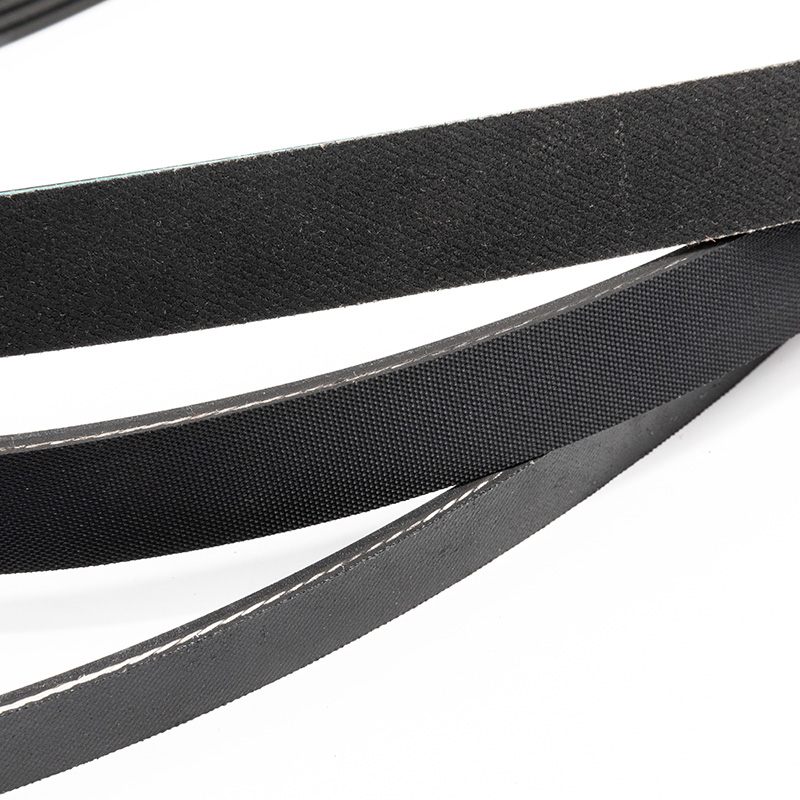V-Ribbed belts, also known as serpentine belts, contribute to reducing noise and vibration in the engine compartment through several key mechanisms:
Multiple Contact Points: V-Ribbed belts revolutionized belt design by introducing a multi-ribbed structure along their length. Each rib engages with corresponding grooves in the pulleys, establishing numerous contact points. This innovative design significantly disperses the load across a broader surface area compared to traditional belts. By distributing pressure more evenly, V-Ribbed belts effectively mitigate the risk of localized stress concentrations that could lead to premature wear or slippage. Consequently, this distributed load minimizes the likelihood of belt-related noise and vibration, ensuring smoother and quieter engine operation.
Improved Grip: The ribbed configuration of V-Ribbed belts plays a pivotal role in enhancing grip on the pulleys. The ribs bite into the grooves of the pulleys, creating a secure and stable connection. This enhanced grip is particularly crucial during high-torque situations or rapid changes in engine speed. By maintaining a firm grip, V-Ribbed belts prevent slippage, which not only ensures consistent power transmission to engine accessories but also reduces the occurrence of belt squeal and other audible disturbances. The result is a smoother and more tranquil driving experience for vehicle occupants.
Enhanced Stability: V-Ribbed belts are meticulously tensioned using advanced tensioning systems tailored to specific vehicle applications. These systems are engineered to uphold optimal belt tension under diverse operating conditions, including temperature fluctuations and engine load variations. By meticulously controlling belt tension, V-Ribbed belts remain securely seated within the pulley grooves, minimizing the potential for belt flutter or oscillation. This steadfast stability translates into a reduction in vibrations propagated throughout the engine compartment, thereby contributing to a quieter and more refined driving environment.
Flexibility and Damping: V-Ribbed belts are crafted from materials engineered to possess superior flexibility and damping properties. This unique material composition enables the belt to flex and conform smoothly to the contours of the pulleys during operation. The inherent damping characteristics of these materials enable V-Ribbed belts to absorb and dissipate vibrations generated by the engine and ancillary components. By effectively attenuating vibrations at the source, V-Ribbed belts significantly reduce the transmission of noise throughout the engine compartment and vehicle cabin. The result is a perceptible reduction in engine noise and vibration, enhancing overall driving comfort and refinement.
Reduced Belt Width: In comparison to traditional V-belts, V-Ribbed belts boast a narrower profile, characterized by closely spaced ribs along their length. This streamlined design minimizes the surface area of the belt in contact with the pulleys during operation. As a consequence, the contact area between the belt and pulleys is reduced, thereby limiting the pathways through which vibrations can be transmitted. By mitigating the transmission of vibrations, V-Ribbed belts effectively dampen noise levels within the engine compartment, culminating in a quieter and more serene driving experience for occupants.




 English
English 中文简体
中文简体

 View More >>
View More >> View More >>
View More >> View More >>
View More >> View More >>
View More >> View More >>
View More >> View More >>
View More >> View More >>
View More >> View More >>
View More >> View More >>
View More >> View More >>
View More >> View More >>
View More >> View More >>
View More >>
